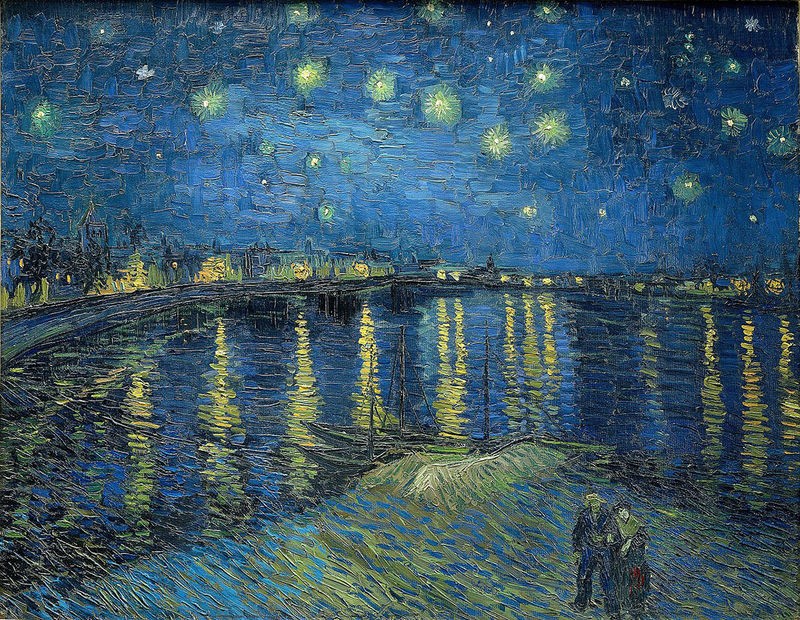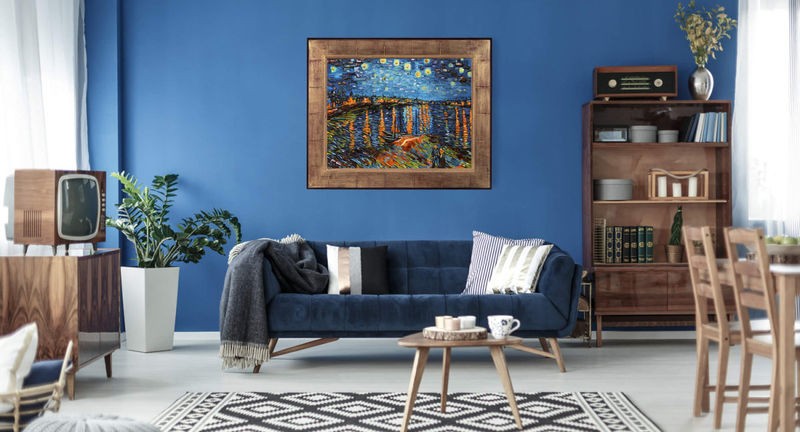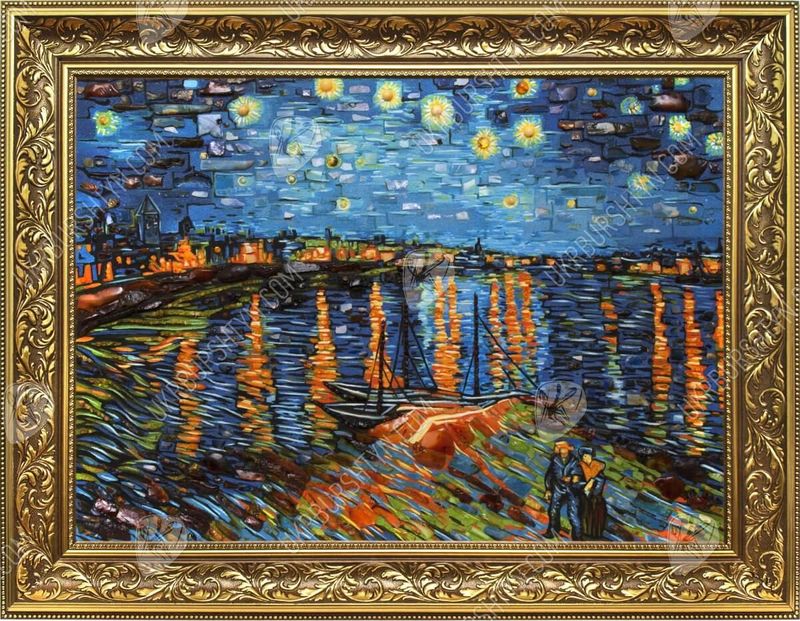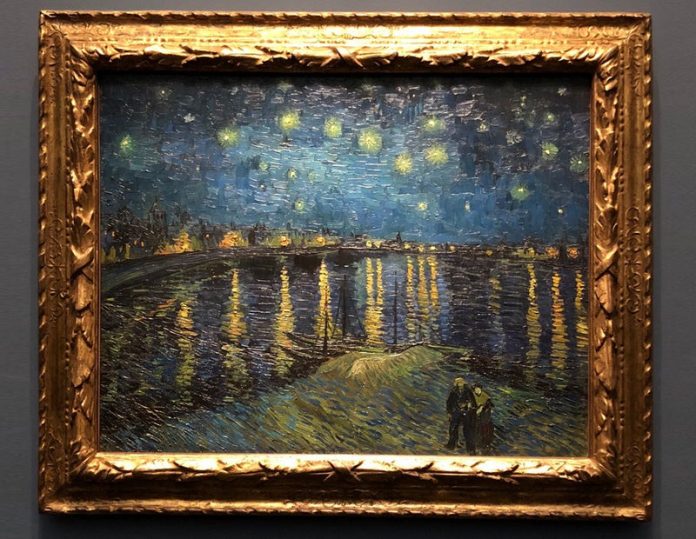Wildlife always inspired artists. They depicted on canvases views of raging seas and ancient forests, calm rivers and majestic mountains, blooming meadows, and snowy expanses. But not many of the canvases look as spectacular, peaceful, and attractive as the painting in our article!
Starry Night Over Rona: How did the masterpiece appear?

Van Gogh’s painting Starry Night over Rhone was created during one of the most fruitful periods of the artist’s life. At that time he lived in Arles, an ancient city in southeastern France, where he found rest from the troubles and anxieties chased by the master in Paris. The artist rented a separate mansion – Yellow House, located on the Place Lamartine at the quay – and went every day in search of suitable nature for the paintings. From February 1888 to May 1889, more than 150 panels, about 100 sketches, and watercolors came out from under his brush.
The result of hard work were such masterpieces as “Peach Tree in Flower”, “Red Vineyards in Arles”, “Night Cafe Terrace”. But even among them, “Starry Night Above Rhone” stands out for its unique flavor and manner of execution – wide, loose strokes. Vincent van Gogh’s primary goal was to convey the essence of this land – hot, vintage, wrapped in a cool mistral. He actively used yellow paint (it has hardly been used in art since the Renaissance), imitating the sun’s rays that lie around the shimmering veil. And night landscapes illuminated huge, almost fantastic stars – as the painter himself claimed, their contemplation replaced religion.
 Vincent van Gogh sent the first sketch to his friend Eugene Bosch. This allows you to set an approximate date of creation of the painting – no later than October 2, 1888. In addition, the master told about the work of his brother Theodorus, and at his insistence in 1889 exhibited the panel in the Paris Salon of Independent Artists, along with another work of “Irisa”. Subsequently, the canvas was acquired by the Museum of D’Orse. There, the landscape is still preserved to this day.
Vincent van Gogh sent the first sketch to his friend Eugene Bosch. This allows you to set an approximate date of creation of the painting – no later than October 2, 1888. In addition, the master told about the work of his brother Theodorus, and at his insistence in 1889 exhibited the panel in the Paris Salon of Independent Artists, along with another work of “Irisa”. Subsequently, the canvas was acquired by the Museum of D’Orse. There, the landscape is still preserved to this day.
Van Gogh: Interesting facts about the painting

“Starry Night Over Rona.”
Like many other famous paintings by van Gogh, this canvas was painted in the open air in a single session. This technique is characteristic of the Impressionists and is called “a la prima” – from the Italian “in one sitting”. Later, however, the master reworked the original sketch several times. The painter captured a view of the Rhone embankment – one of the largest French rivers. Here, its bed turns smoothly, encircling the rocky promontory, which erected the city center. Bright yellow lanterns shine on the shore – they contain gas lamps, which were a real technical breakthrough then. They are reflected in the water, coloring it with golden, bronze, green highlights. The lights in the aquamarine sky resonate with them – you can distinguish the Big Bear’s bucket and Polar Star, sparkling, just tiny fireworks. The marvelous landscape ends in the foreground, where two lovers are shown walking along with the current and small ships at the pier.
The colorful panel is imbued with serenity and peace. In it, nature and human creations are inextricably linked and harmoniously complement each other. That is why the work not only delights and enchants, but also makes one think about the world around him – the fragile balance in which all its elements stay, and the influence of people on this unstable balance.
























